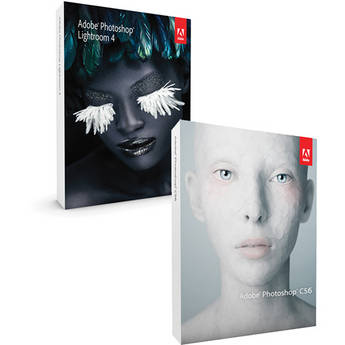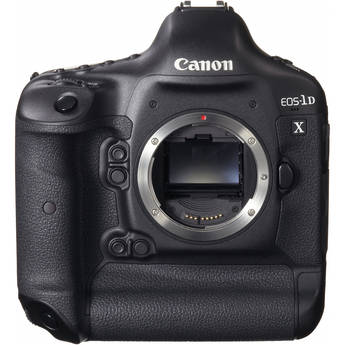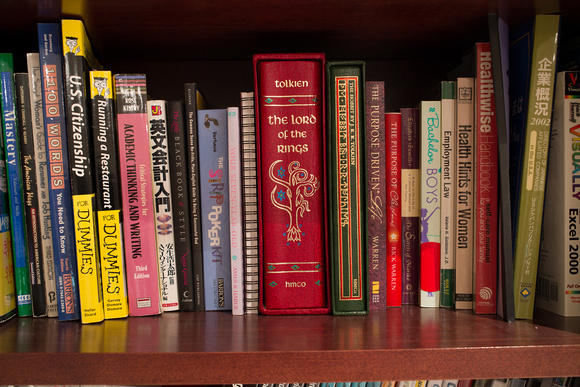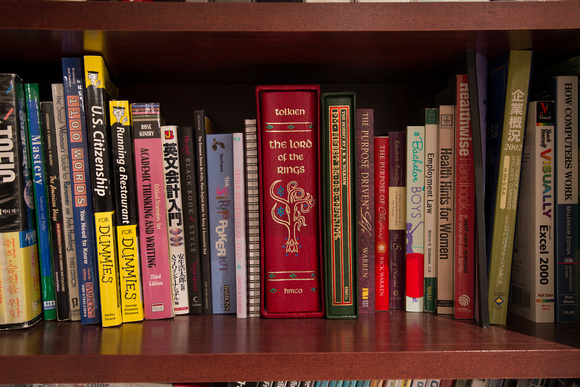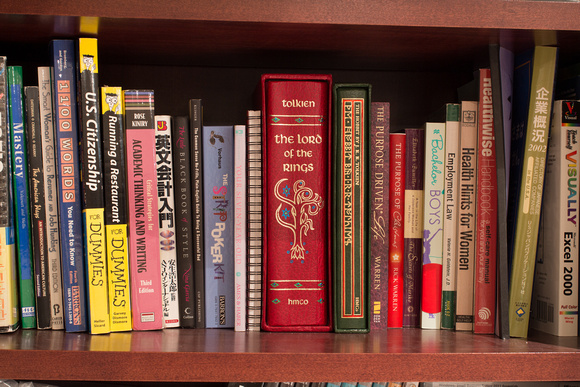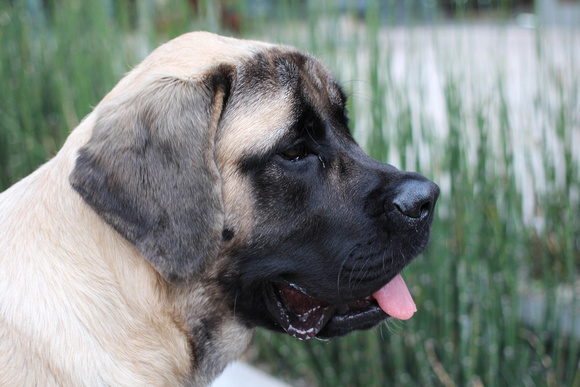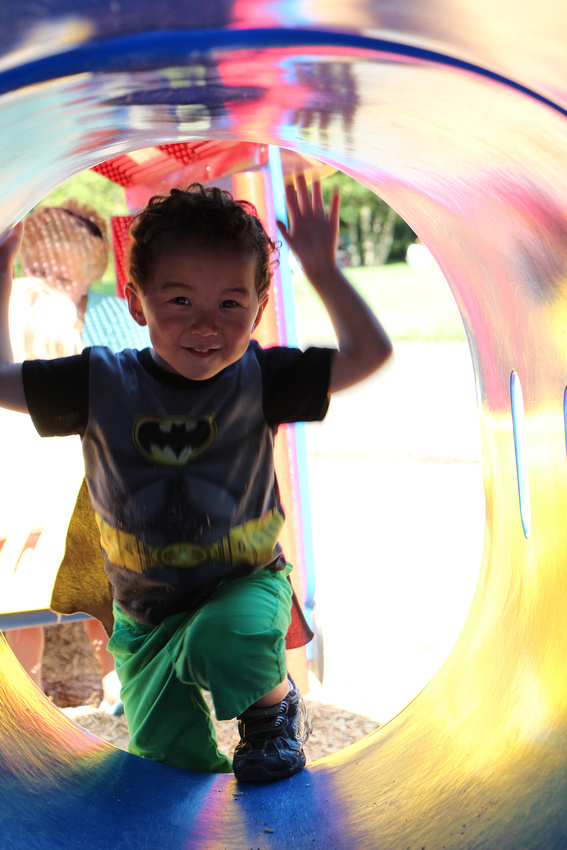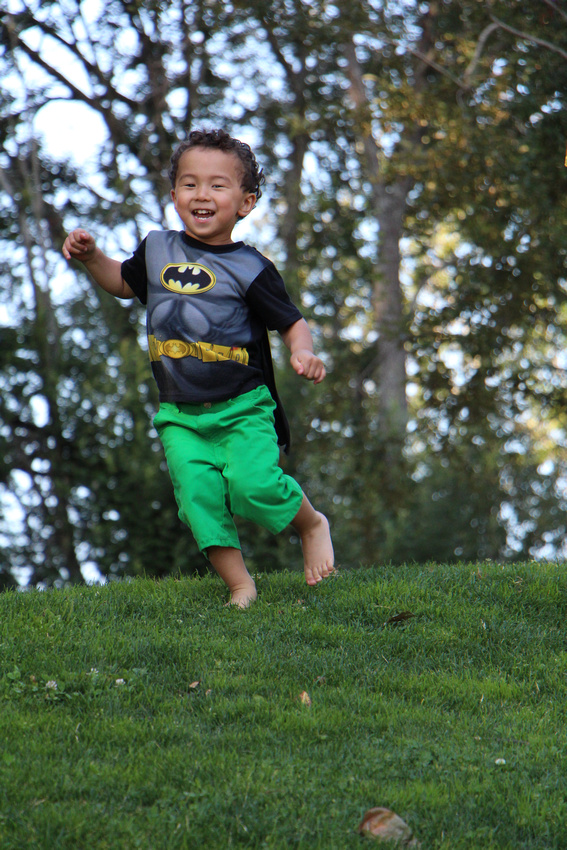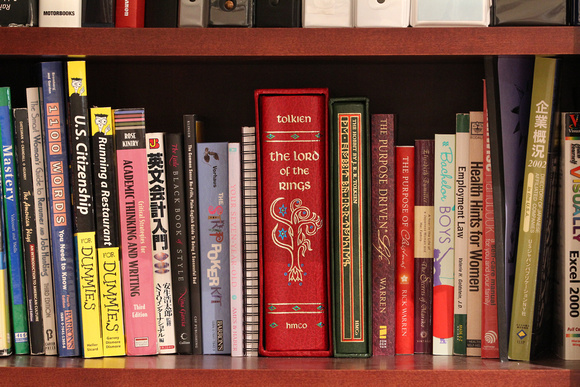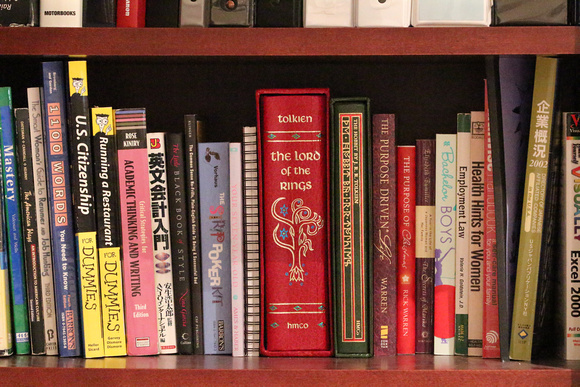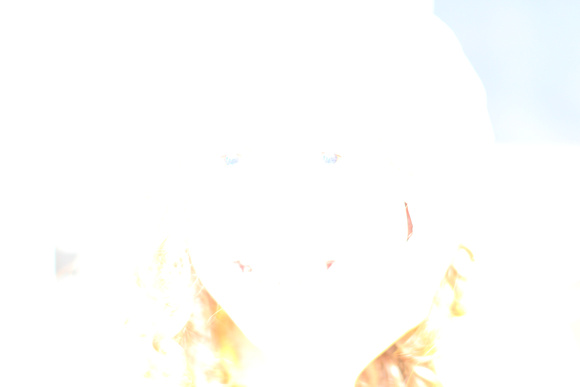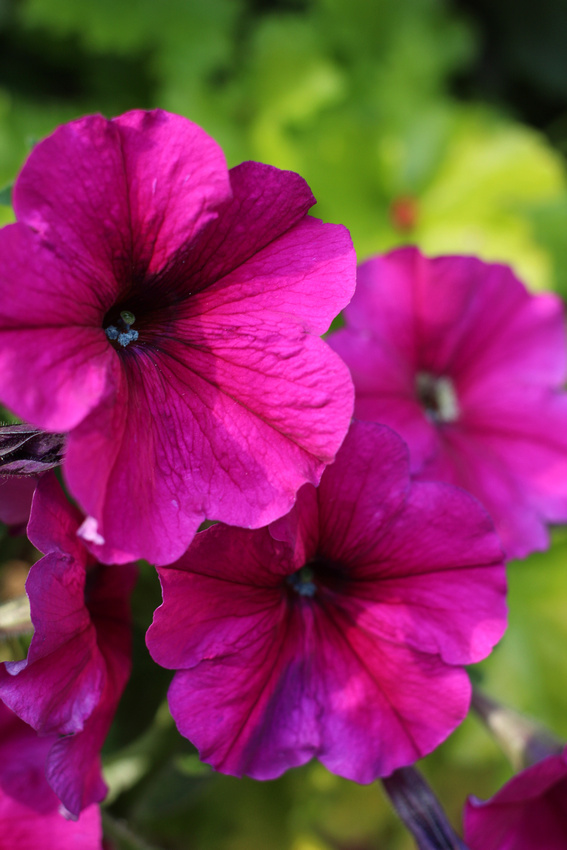
Nice depth of field and bokeh
f/4 @ 40 mm (pancake lens),1/125, ISO 100
Manual single focus point inside the flower
See my article entitled “REVIEW: Canon Rebel T4i with Real World Photos & STM Lenses” for the first part of my review. In this article I discuss additional details about image quality, performance and video that were not addressed in the first article.
A word about the EFS 18-135mm STM kit lens
Honestly, most kit lenses – especially on entry level cameras – usually suck, so it’s rare that I have much good to say about them. While the optics of the EFS 18-135mm STM kit lens aren’t going to come close to what you’d find in a Canon L lens, I was surprised to find that it was quite usable as a starter lens.
In my testing I found the EFS 18-135mm STM kit lens (B&H and Adorama) to outperform the 40mm pancake (B&H and Adorama) in many ways on the T4i (more on that in another article). As a result, I feel like this is a kit lens worth using until you can afford some better glass. I also feel like it’s worth keeping for doing video simply because of the fast and silent focusing it can do automatically when mounted to a T4i. In this respect, I found the STM lenses to outperform their L lens counterparts in terms of video continuous autofocus usability.
Once upon a time I never would have even dreamed of discussing a non-DSLR camera in a review of a DSLR, but the competition is improving so it’s worth mentioning now. I also still think that if your long-term strategy is to grow into better DSLR’s or use the great lenses offered by the major DSLR platforms of Canon and Nikon, then you should always start with a DSLR.
Now if you read my Sony NEX-7 review then you know that I think it beats the pants off the X-Pro1 and is competitive with DSLR’s. In testing the T4i against the NEX-7, I’d have to give the Sony the nod as being the better camera. I’ve been a long time fan of the Rebel series so I never thought this day would come, and apparently Canon didn’t either.
The Rebel T4i is a great camera in many ways, but it’s days of stomping the compact cameras has officially ended. Of course the T4i is cheaper so if your budget is tight you can still find solace in having a great camera that is a good starting point for growing into the Canon system. However if your objective is just to buy a camera that takes great images and you don’t plan on investing in many lenses, then the Sony NEX-7 is going to give you better images in a smaller form factor for sure.
Does sensor quality make a difference? (A 5D Mark III comparison)
Now nobody in their right mind should think that I’m saying that would be T4i buyers should get a 5D Mark III because it has a better sensor. For well over $2000 more, it should! However, I think it’s helpful to do a side by side comparison just to inform people on what the differences are so you can level set your expectations when using a entry level camera. As much nonsense as there is on the web (and from electronics store sales people) you’ll hear people say things like “just as good” when discussing how the Rebel T4i compares to it siblings. However, there is a measurable difference that I think you should be aware of so you don’t go nuts thinking that your lens is back focusing or you have a defective camera. You get what you pay for, and while I think think the T4i is a great camera – it doesn’t really come with a high-end sensor.
I’ve included images below. You should click each image to see full size versions of each image and compare them in two separate browser windows. For beginners who might not see the differences right away, let me help orient you on the similarities and differences:
- If you are going to just put small images on the web or print 4x6 prints then it’s going to be tough to notice the difference between the result you get with a T4i vs a high end camera like the 5D Mark III. The reason why is because detail is lost when you make an image small, so all of that data loss starts to put them on a much closer level. However, you’ll look at see that the 5D Mark III image (bottom) has a broader range of colors. At first it may seem that the T4i is better because its brighter, but that’s only because it can’t capture the range of color tones (called Dynamic Range) found in the 5D Mark III image. Where this becomes most obvious is in the shadow areas where upon close inspection you’ll see more shades of browns and black. People typically can’t place their finger on this difference other than to say that the 5D Mark III image just feels richer.
- Notice how that both images use the same identical lens, but the T4i requires a 15 second exposure to get a correct exposure whereas the 5D Mark III only needs 10 seconds. This is a characteristic of a better sensor that translates into faster shutter speeds (which means lower ISO’s needed), so you have less noise in your images – it also often means less motion blur in the automatic modes of the camera. Since the most common complaints of new DSLR owners are noisy and blurry images, it’s easy to see here why that happens because the lesser sensor gives you a double dose of trouble – even if you use the same exact pro lens. If you use cheap kit lenses then problem is compounded even worse, so when not using a tripod typically you’ll find many higher end sensors just give you a sharper image with less noise.
- Now one advantage (or disadvantage – depending on your intent) of the smaller sensor of the T4i is that you have a deeper depth of field. To see this below look at the front of the bookshelf at the bottom of both photos and notice how the 5D Mark III image is kind of blurry. To the beginner the greater depth of field of the T4i is preferable as that is what we are used to in our point and shoots. However, blur isolates a subject so it can come in handy and can be harder to get in the smaller sensor. Where this really comes into play is on the edges of the image where the T4i’s smaller sensor will only use the sharpest part of the lens, so it’s sharpness on the text of the books on either edge of the frame will be better than the 5D Mark III. All of these points are advantages shared by all cropped sensors (including the 60D, 7D, etc…) so some landscape photographers find the cropped sensor to be preferable, whereas portrait photographers typically prefer the full frame as edge blur is more desirable in portraits.
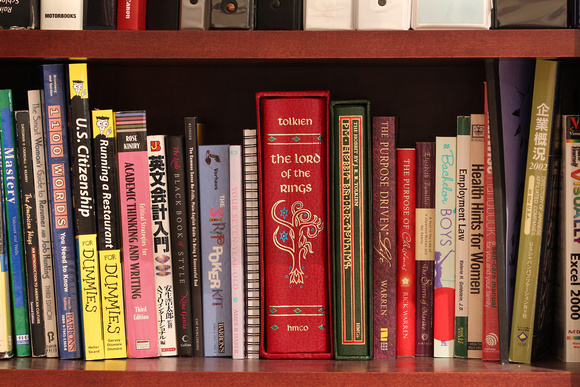
T4i f/8 @100 mm, 15s, ISO 100 on a tripod using the 70-200mm II lens.
Click for original
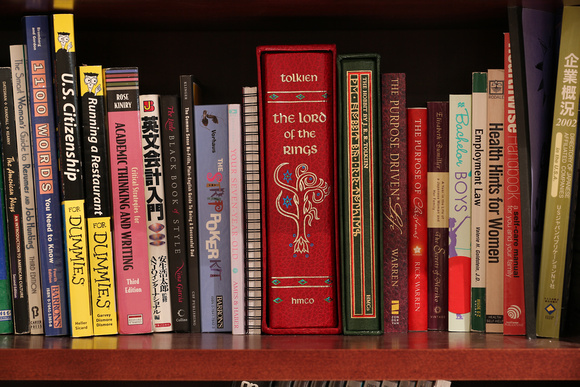
5D Mark III with the same lens and settings
but the camera indicated 10 seconds for a correct exposure
There’s other differences like distance from the subject that favor the cropped sensor, but I’ve excluded that from this comparison to give you a better set of images to explore for other characteristics.
Here’s a 100% crop of images from both cameras so you can see some of the differences previously discussed. The T4i does a great job, but the larger sensor of the 5D Mark III is just going to give you more detail and color (for both raw and in-camera jpeg).


If you look at the two images above and struggle to see the differences, or simply don’t care about the differences, then your money is best spent on a entry level camera like the T4i. The same is true if you’ll never print large images (13x19” or greater) as small prints are very forgiving and rarely show much of the extra details of the larger sensor. You will see a difference, but it will be subtle at smaller sizes. At larger sizes there’s no comparison – the larger sensor is mandatory. It’s also worth noting that magazines and most prints sold are letter size or smaller, so they typically won’t benefit much from the better sensors. Good post-processing can typically narrow the gap so that it’s indistinguishable even to most trained eyes.
It’s also worth noting that if you were to take previous generation cameras (especially full frame sensors of two generations back), you’d probably find that the T4i is as good or better in some cases. The reason why is that technology has improved drastically so the detail possible on a smaller sensor is better than ever.
The lesson here – don’t become obsessed with pixels and sharpness. If your budget is stretched buying a T4i then don’t stress – it’s a decent camera that will give most normal users fantastic results. It’s not “as good as”, but it’s still pretty darn good.
Real World Video
Okay, I’m not a videographer so this is really more like really bad video (think Blair Witch Project bad). However, it’s the stuff that any parent typically has hours of sitting on their hard drive (or on old tapes). These are all done with auto ISO in manual mode at 1/30 sec and f/3.5 to 5.6 using the camera defaults. I found the AF FlexiZone Multi mode to be the most effective with my son, but you need to pay attention and occasionally tap the touch screen LCD to help the AF system focus on the right place for the best results. In these videos I did NOT do this so this is what the camera did all on its own. The single zone is the most accurate, but is useless with kids. The face tracking did terrible in my experiments so I’ve spared you the blurry videos it gave me.
As I mentioned previously, the STM lenses are worth their weight in gold when doing video as they outperform non-STM lenses by a large factor. From a nice short minimal focus distance to fast and silent continuous auto focus – they offer the best results I’ve seen from a DSLR. A cheap camcorder or point and shoot will outperform in terms of focus performance, but the image quality of a DSLR blows them away. Manual focus is still the way to go for proper video, as is having better stabilization that isn’t found on any DSLR.
13 seconds - follow movement with kit lens
1:26 - circle subject and zoom in and out with kit lens
20 seconds – backlit with 40mm pancake lens
1:11 – indoors at dusk with kit lens
This is what you could expect from typical birthday party scenarios
As much as I hate doing video, what I saw in the T4i is promising for the future of DSLR’s. It’s offering of continuous AF is a Canon first that isn’t even found on the 1D X or 5D Mark III. It’s certainly usable to video kids birthdays if you don’t mind the occasional out of focus moment (as you can see in my videos above).
I’m no fan of the 40mm pancake lens for video
The 40mm pancake lens really let me down while shooting video. Nearly all of the videos I shot were blurry and out of focus as the lens failed to keep up with moving action. If I manually focused or had a stationary subject it would be fine, but forget about using it with kids. It was also much noisier than the kit lens (by a significant amount), but I never noticed it making that much of a difference on the video itself.
The kit lens performed reasonably well as you can see from the videos above. It’s not perfect, but it’s much more usable (and beats full time manual focusing of moving action).
Sound Quality
A lot of noise was made in the press release about the sound quality improvements in the T4i, but you be the judge. Honestly, I thought the sound sucked and was more muffled. Perhaps internal sound proofing was added to help with keeping camera focusing noise out of the video, but the sounds in the audio felt very muffled to me. In short, pick up an external mic if you care about sound quality.
More Real World Sample Images
A dirty little secret for a long time in the world of reviews was that many reviewers were afraid to show their out of camera shots for fear of being judged. After all, any great photo you’ve seen is typically processed to give it that perfect crop, vibrant color, perfect exposure and amazing sharpness. In some cases this was all done in-camera by gifted photographers with great lighting and exciting subjects.
Many consumers seeing these amazing shots would think that they only needed to buy that camera and/or lens and get those great shots. However, when they did they were often disappointed with their dull, lifeless shots because that’s not real world. I touch on this point on my other blog in the article entitled “Let the eyes tell the story”.
I have broken that trend – intentionally – and I’m happy to see that other major sites are starting to follow (to a lesser degree). What you see on this blog in my camera reviews are shots that normal people would take (i.e., family shots) under real world conditions (crappy lights, environments, backgrounds, etc…) without any post-processing. I share the in-camera JPEG’s so you can see exactly what you’d expect to get with some basic knowledge of photography. In short, these are the worst “keepers” (meaning that obvious user error shots are often excluded) you could expect to get from a T4i:
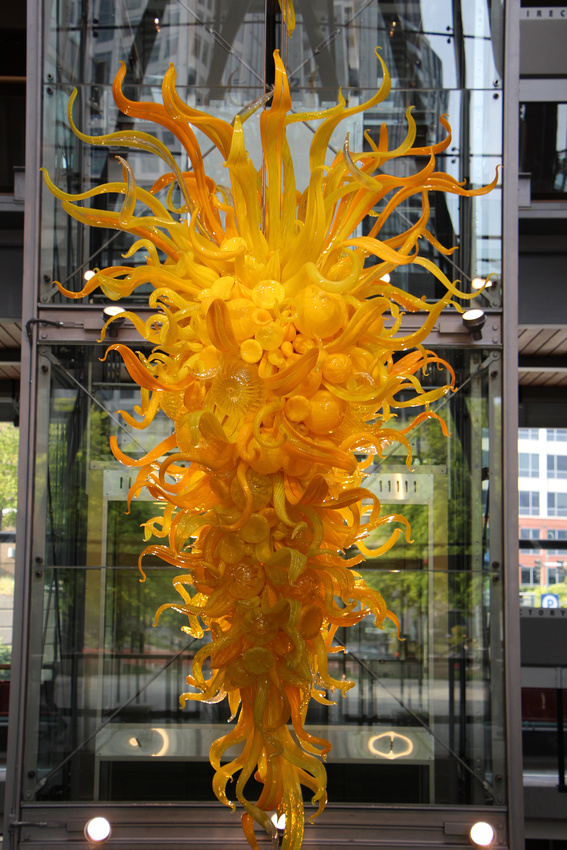
Decent Dynamic Range
f/4.5 @42 mm (kit lens), 1/50, ISO 100, No Flash, AWB
The RAW file can be used with Viveza or the 7 Point System
to brighten the dark area at the bottom of the sculpture

Great Zoom (216mm effective) from the 18-135mm kit lens
f/5.6 @135 mm, 1/200, ISO 160
Taken from the same spot as below

Great wide angle (28.8mm effective) from the 18-135mm kit lens
f/3.5 @18 mm, 1/800, ISO 100
Taken from the same spot as above

Good detail and bokeh from the kit lens
T4i, f/5.6 @135 mm, 1/320, ISO 1250
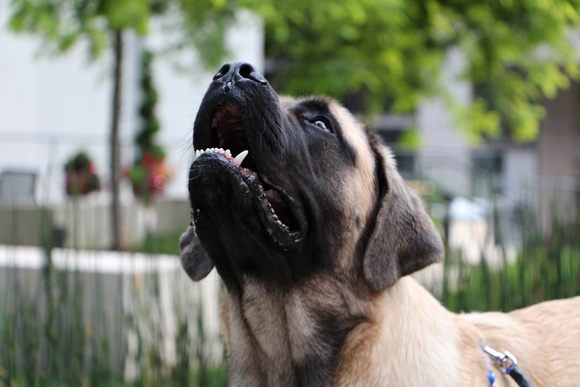
Decent autofocus
f/5 @ 69 mm,1/160, ISO 250

Unless you enjoy beatings, don’t use the in-camera flash on your spouse!
Invest in a 430 EX II or 600EX-RT instead
f/5 @ 74 mm,1/125, ISO 100, Flash Fired

Can’t afford an external flash? Find good light and let the T4i do it’s job
f/4.5 @35 mm, 1/125, ISO 200
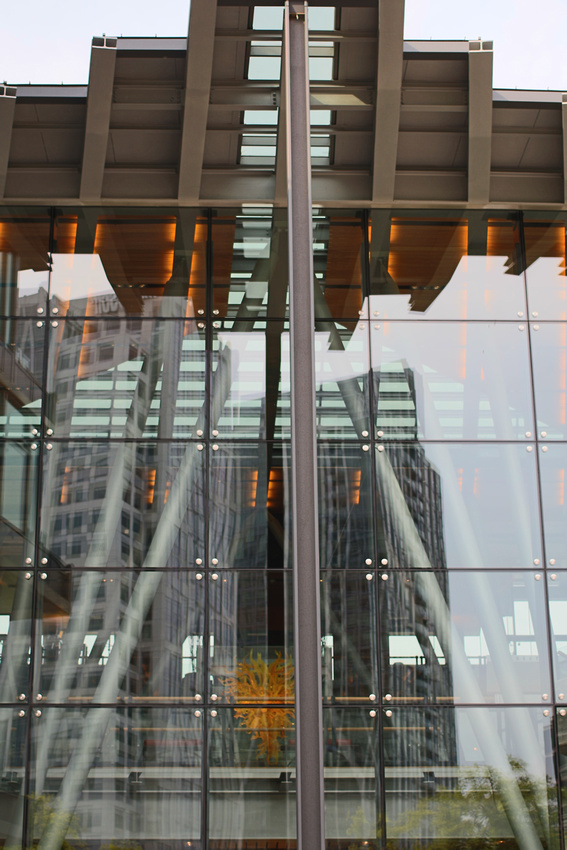 T4i in-camera HDR is pretty lame, so plan to get HDR Efex Pro 2 instead
T4i in-camera HDR is pretty lame, so plan to get HDR Efex Pro 2 instead
In-camera HDR chooses three different exposures and combines them (originals not preserved)
Compare to below with no HDR

Program (P) Mode Exposure – NO HDR
f/6.3 @40 mm, 1/320, ISO 400
Polarizers are helpful for reflective glass

Kit lens does well at f/11
f/11 @18 mm, 1/50, ISO 800

Noiseware or Dfine come in handy to remove noise indoors
f/3.5 @18 mm, 1/125, ISO 3200
Willing to pay a lot more for better results indoors? Read this!
See the full gallery at http://ronmart.zenfolio.com/t4i for more images. Read my review of Zenfolio to see why I prefer to store my pictures there.
See my article entitled “REVIEW: Canon Rebel T4i with Real World Photos & STM Lenses” for the first part of my review where I have my conclusion and other thoughts.
Where to buy
Here’s where I recommend purchasing from:
Order now from B&H
Canon EF 40mm f/2.8 STM Canon Rebel T4i Body Only Canon Rebel T4i w/18-55 IS Canon Rebel T4i w/18-135 IS STM ORDER NOW from Adorama
Canon T4i Body ONLY Canon Rebel T4i with EF-S 18-55 IS II lens Canon Rebel T4i with EF-s 18-135 IS STM Canon EF 40 F2.8 STM lens Other articles you may enjoy
Disclosure
If you make a purchase using links found on this blog, I may make a commission. I appreciate your support and thank you for using my links or sharing links from this blog on your own favorite forums.
I was provided a loaner camera and lenses from B&H so I could bring this article to you.
NOTE: This site requires cookies and uses affiliate linking to sites that use cookies.
. Either way, your support is greatly appreciated!
This blog is intended for freelance writing and sharing of opinions and is not a representative of any of the companies whose links are provided on this site.
The opinions provided are of Ron Martinsen alone and do not reflect the view of any other entity

